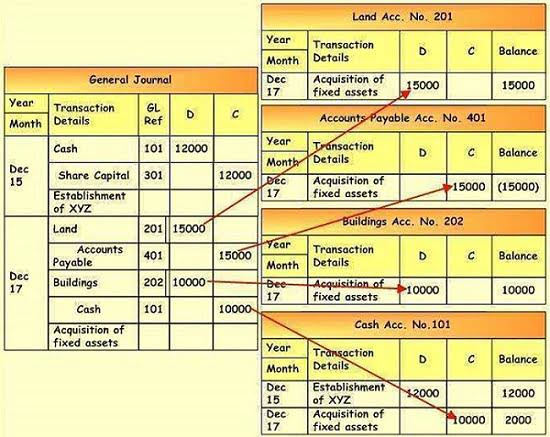
Unlike other tax certificates, you don’t need a bachelor’s degree to take the exam. The major requirement is the successful completion of the three-part exam. Ideally, candidates should aim to pass all three parts within one year. Additionally, you don’t need to complete any prerequisites or experience requirements, making it a great option for people who want to specialize in taxation or represent clients before the IRS.
Included with Ultimate Pass, exam coaches help you learn how to study efficiently and answer questions accurately. Build your testing focus and endurance, learn how to guess and when to skip, and ultimately beat exam anxiety. Yes, the EA exam is considered hard, with varying levels of difficulty between each section. Section 2 that focuses on business is regarded as the hardest part of the examination to pass. The Enrolled Agent exams are closed book with no access to any reference materials or electronic devices, including during breaks. Paper, pencils, and a calculator will be provided at the examination site.
Enrolled Exam Scheduling, Fees, and Administration
You may electronically apply for enrollment and make secure payment of the $140 enrollment fee at Pay.gov. If you fail an exam part, you must allow 24 hours before scheduling another appointment for that same part. However, you can schedule an appointment for a different exam part without waiting 24 hours. Each exam part may be taken 4 times per testing window, which runs from May 1 to the end of February. The Part 3 pass rate has not only been more consistent than the others, it’s also been consistently higher. Its pass rate is the best of all three parts and it doesn’t look like that’s going to change any time soon.
- To successfully pass, a minimum score of 105 is required on each part of the exam.
- The Enrolled Agent (EA) exam, officially known as the Special Enrollment Examination (SEE), is segmented into three parts, each covering different realms of tax-related expertise.
- That candidate has until Nov. 15, 2024 to pass the remaining part.
- Candidates may take breaks to access food and beverages stored in their locker.
During PTIN application, you will be asked for your social security number. If you do not have a social security number, you can apply for your PTIN using Form 8946. With Prometric ea exam passing score testing centers all over the world, you do not need to come to the U.S. to test. The other 15 questions are experimental and are not included in the score for that part.
Steps to becoming an enrolled agent:
We have compiled a list of free EA Exam practice exams, resources, and study guides. The difficulty level of exams can vary depending on individual perspectives and experiences. Comparing the Enrolled Agent (EA) exam to the Certified Public Accountant (CPA) exam, it is generally considered that the CPA exam is more comprehensive and rigorous. Double-check your appointment date and time, and consider taking some time off before the exam to relax and clear your mind. Remember to bring the necessary identification documents and arrive early to avoid any last-minute stress. An individual with 5 years of relevant employment with the IRS may apply for enrollment to become an Enrolled Agent (EA) without taking the exam.

The average Enrolled Agent (EA) exam pass rate currently stands at 74%, remaining within its historical range of 69% to 74%. In comparison to other professional accounting exams, such as the CPA Exam with a pass rate of 45-49%, the EA exam pass rates are significantly higher for all three parts. Instead, it suggests that, with adequate preparation, you can achieve a passing score. The table below presents the pass rate for each part of the exam for the last 5 years.
Enrolled Agent Exam Review
Take a look at the topics tested on Parts 1 and 2 and decide which topics you feel more comfortable with. Sit for Parts 1 and 2 in order of your familiarity level and then take Part 3 last. Testing according to these considerations will help you master the topics so you can pass each part on your first try and become an EA faster. Each exam part covers major topics the IRS calls “domains.” The IRS releases Exam Content Outlines Opens in new window detailing these domains and the content tested in them. We’ve broken down the domains tested per part, the approximate number of questions per domain, and percent of the exam covered by each domain. Each of the three EA tests has 100 multiple-choice questions and a 3.5 hour testing time.
- While the maximum attainable score is 150, passing hinges on surpassing the stipulated minimum, entrenched in a complex scoring algorithm that weighs both accuracy and question difficulty.
- Whether you’re seeking career advancement or educational success, Bryce Welker is the ultimate guide to help you get there.
- The EA credential requires passing a three-part exam administered by the IRS before applying for licensure.
- Instead, it suggests that, with adequate preparation, you can achieve a passing score.
- In 2021, the EA exam faced major changes, and the pass rate average was also effected.
- The Joint Board will monitor the content of these SOA exams in the future and will consider changes to the EA-1 waiver requirements if and when appropriate.
- Enhancing your breadth and depth of knowledge increases your scoring potential, effectively safeguarding against the unpredictabilities of the adaptive testing format.
This ensures that they are well-prepared for questions that may require reference to specific tax provisions or regulations. And you’re probably a tax professional looking to become authorized to represent taxpayers before the Internal Revenue Service (IRS). If so, you’ll need to be well-versed in tax law, tax preparation, and other tax-related matters. Due to its reputation, candidates often take Part 2 after passing at least one of the other two sections, meaning that candidates are more likely to have a study strategy in place before starting. However, if the candidate prepares well, they often find Part 2 to be about the same difficulty as Part 1 or even Part 3.
This means that many complete Section 3 first, then go on to Section 1, and then save Section 2 for last. Section 2 has the lowest exam pass rate at around 60%, whereas Part 1 and Part 3 have pass rates of 75-80% and 90% accordingly. In order to become an enrolled agent, you must achieve passing scores on all three parts of the EA Exam. The EA exam has been designed to test competence relating to tax matters for the purposes of having the privilege of representing taxpayers for the IRS.
- The EA exam has been designed to test competence relating to tax matters for the purposes of having the privilege of representing taxpayers for the IRS.
- If you are a CPA, then there is no need to become an EA, as the CPA is qualified to perform the duties of the EA.
- A passing score on each part of the SEE is required before the IRS will admit an Enrolled Agent to practice.
- It is important to note that the EA exam is considered a difficult test, requiring a comprehensive understanding of the tax code, tax calculation, and tax formulas.
- Information about pass rates and exam changes can help you plan, but it shouldn’t stress you out!
- Your familiarity with the topics and your current knowledge ultimately determine how much material you still need to master.
Large jewelry items must be stored in your locker due to concerns over concealed recording devices. Water in a clear or transparent container with a lid or cap must have all labels removed, and the container will be inspected for notes or other prohibited test aids. You will need to remove the lid/cap for visual inspection by the Test Center staff. These inspections will take a few seconds and will be done at check-in and again upon return from breaks before you enter the testing room to ensure you do not violate any security protocol.
